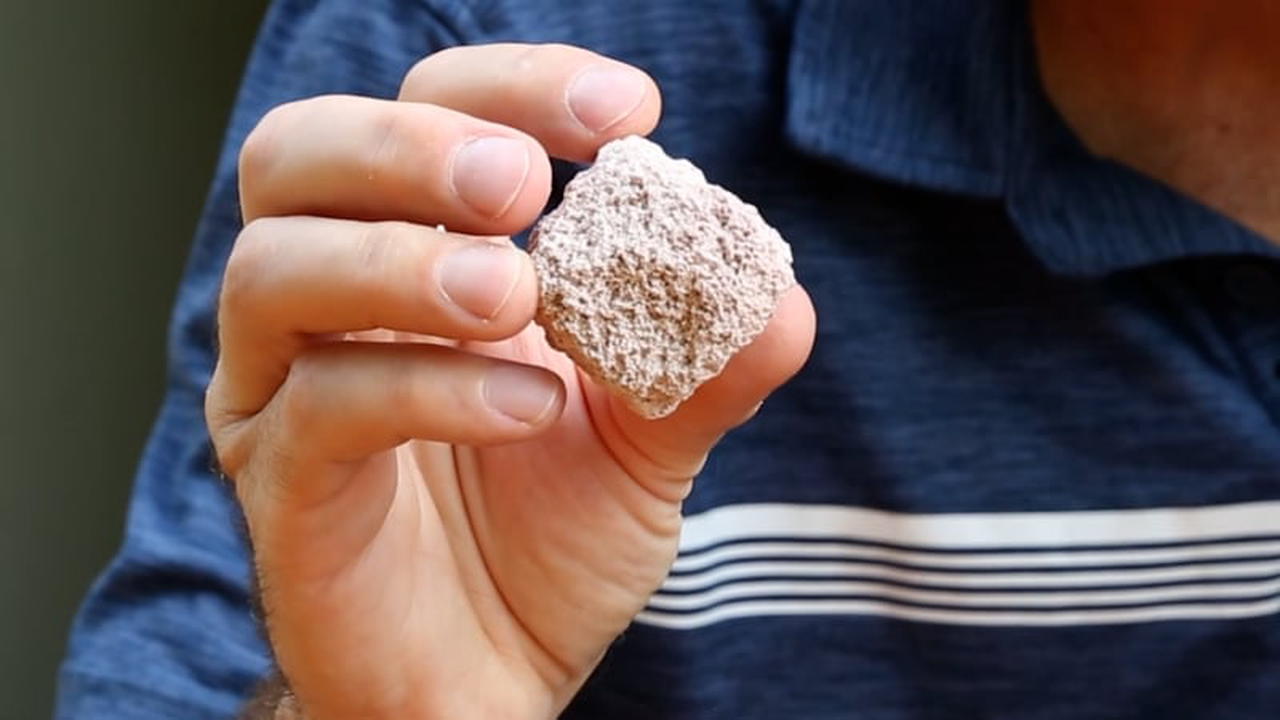Produce Water Treatment With Electro Water Separation
A Fast, Versatile, Low Maintenance Process Using Electricity Combined With a Small, Optimized Quantity of Simple Chemical Additives
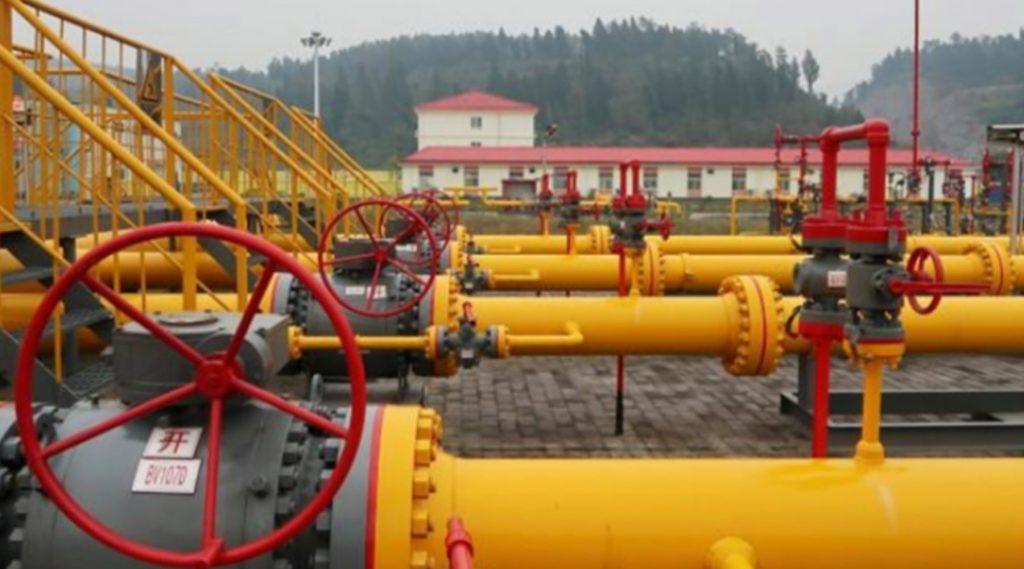
Introduction
Object: Produced water from Shale Gas well, central west China, BaiTao Town Fueling District, Chongqing city. The Produced Water from shale gas stations in this region contains oil, bio contaminants, minerals and other chemical elements which OriginClear’s Electro Water Separation™ handles.
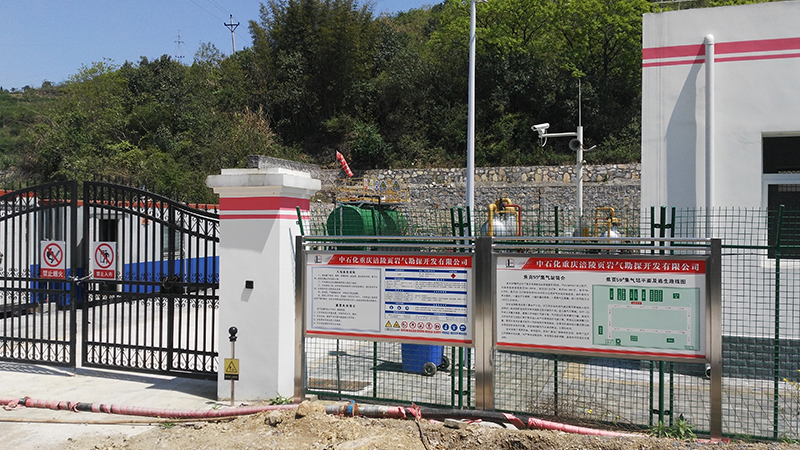
Location: #59 Shale Gas well, BaiTao Town, Fueling Dist. ChongQing Treatment
Duration : April 6 – April 20, 2017
OriginClear Staff : Stephen Jan, Shi An
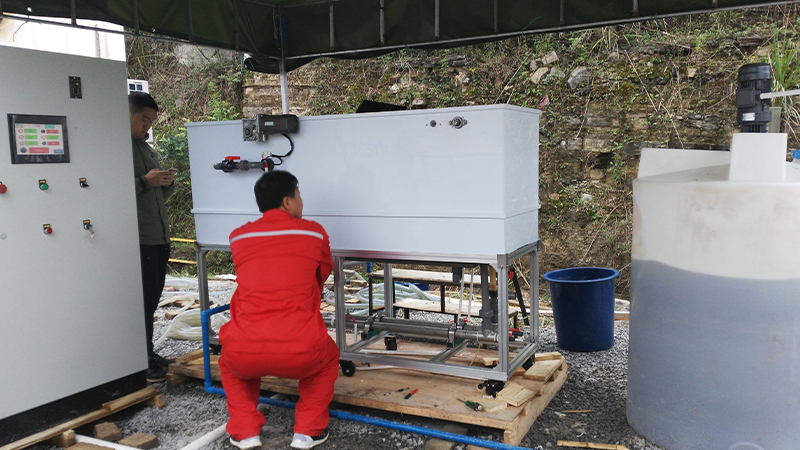
A Breakthrough Technology
Electro Water Separation (EWS™), which OriginClear developed in the United States, is a sequential combination of electrically induced electrical catalytic reaction (ECR) and electrical gas flotation (EF) , resulting from known chemical reactions occurring when the Breakthrough water cleanup technology wastewater stream contacts a series of specifically designed electrodes. It is a fast, versatile, low maintenance process using electricity combined with a relatively small, optimized quantity of simple chemical additives, such as PAC, to do the final sediment after the EWS process.
In China, OriginClear cooperates with local engineering firms to perform EWS in mainly doing pretreatment phase for other post treatment like UF/RO and MVR, resulting in a complete solution.
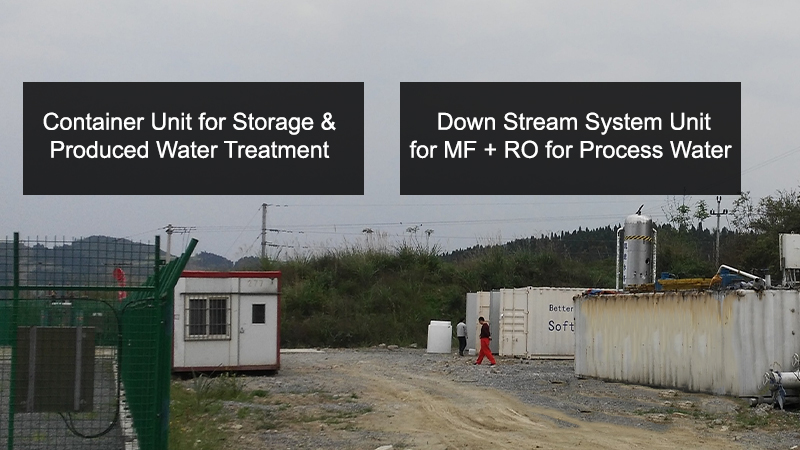
Demonstration Tests & Pilots
The firm and its partners have conducted a series of demonstrations and tests in the same site to further confirm that the process can and does address shale gas produce water treatment issues, while also defining process parameters for full size commercial systems. This in turns allows us to estimate the operation’s financials, both as to Capital Expenditure (CapEx) and Operating Expenses (OpEx). CapEx being subject to system size and manufacturing conditions, we chose not to discuss this point here, but we estimated an average OpEx based on the process parameters defined during these various tests.
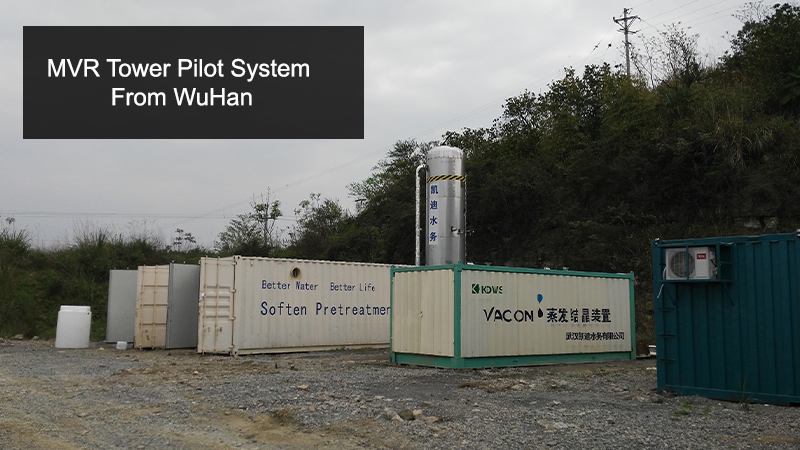
On-Site Demonstration
The goal for this initial demonstration was to reduce COD from 1,000 to less 100 and Ammonia (NH4) from the mid 100 ppm to below 10. Our mission was to show proof of concept of technology in a flowthrough scenario, live and in real time. At this point, neither CapEx nor OpEx was considered, but obviously would come into play should the demonstration show EWS to be a viable technology.
Location
The demonstration site is in a mountain area at central west China Chongqing city #59 shale gas well belongs to Sinopec. Produced water discharge is 200 tonnes/day.
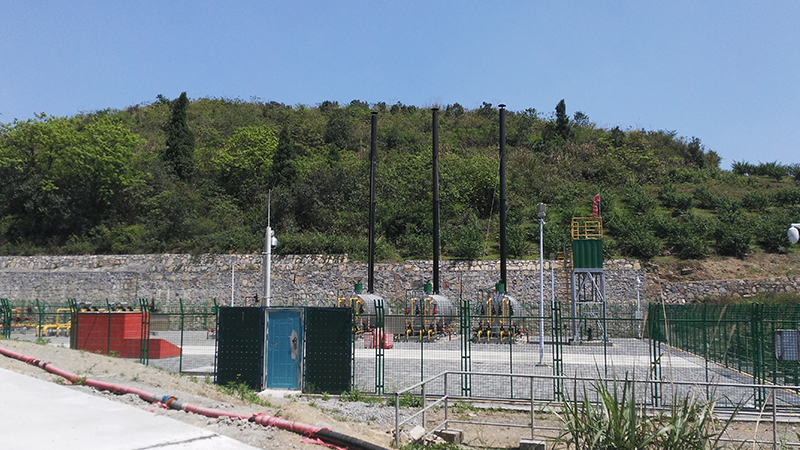
Technology Platform
- OriginClear model E30 – two stacked electrode kits performing Electro-Catalytic Reaction (EC), using MMO anodes (two 1.2 meter length in series) and SS304 cathode
- Electro-Flotation (EF) stage, equipped with two MMO electrode kits (1” diameter tube at 1 meter length, 8 tubes per kit in parallel)
- Sediment tank with PAC (Polyanionic Cellulose) as an additive for TSS settling. This is a specific design that was developed for this application only, different from the conventional flotation processes
- Sand filter to handle any remaining gross particulate
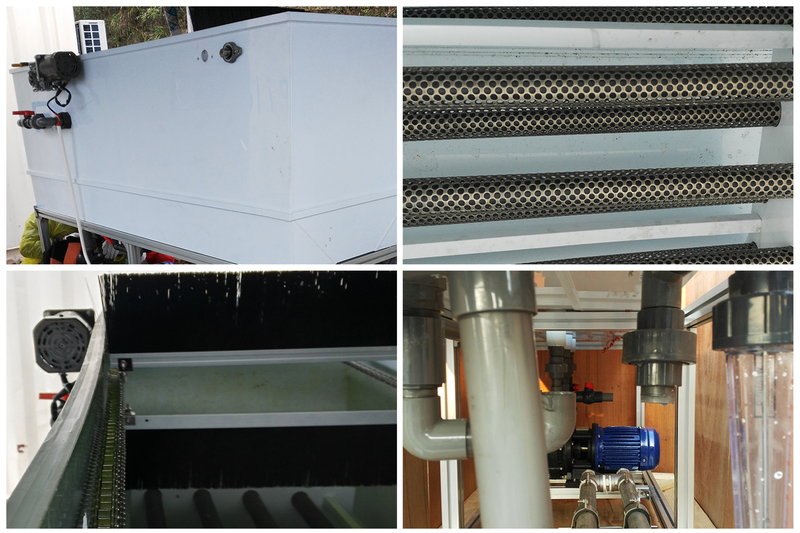
Influent Water
While there is variation on the inflow, the mean water quality is roughly as follows:
- >1,000 ppm COD
- <100 ppm NH4 • pH between 6.35 and 7.5
- TDS 24,500 ppm
- Average atmospheric temperature: High 30ºC low: 20ºC
Metrics/Analytics
- Visual • COD, NH4 testers
- pH meters
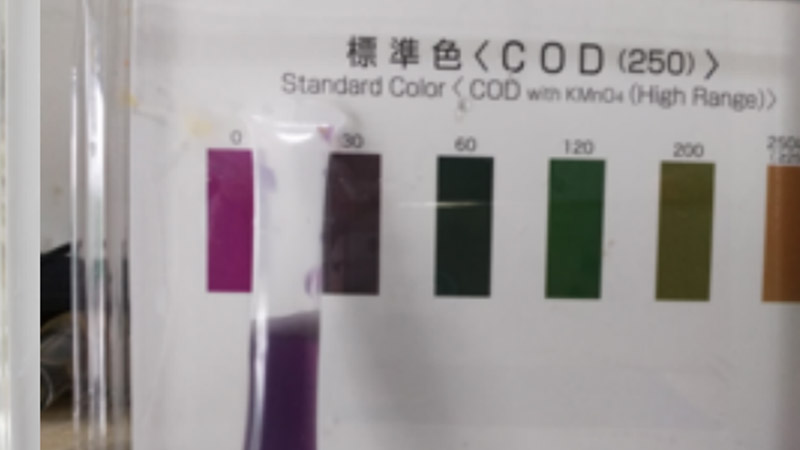
Set up Sequence
§ 1000 liter input water buffer tank § ECR Breakthrough water cleanup technology § EF § 1000 liter PAC sediment tank § Sand filter Process sequencing was established over a period of three days. The flow rate was set at approximately 650 liters per hour, to match the best performance of the EWS system.
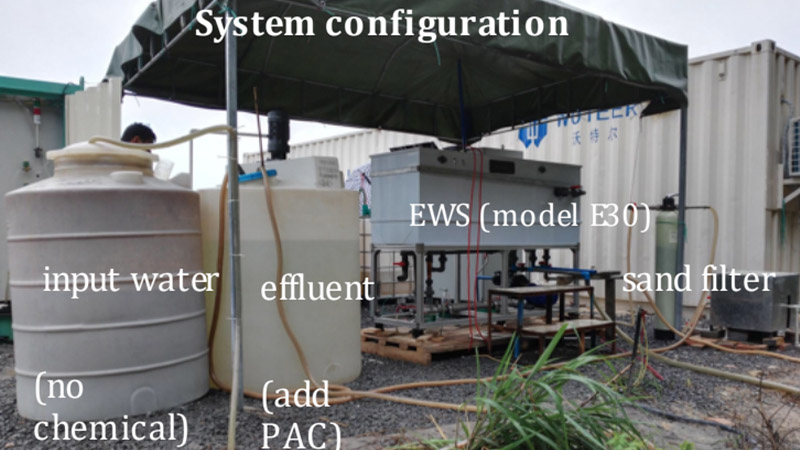
Demonstration Protocol
• Started the E30 inlet pump. Set ECR unit powered at 6.3VDC/90A.
• After EF electrode kits are fully immersed, start the power of EF electrode kits in the tank powered at 8.5VDC/180A
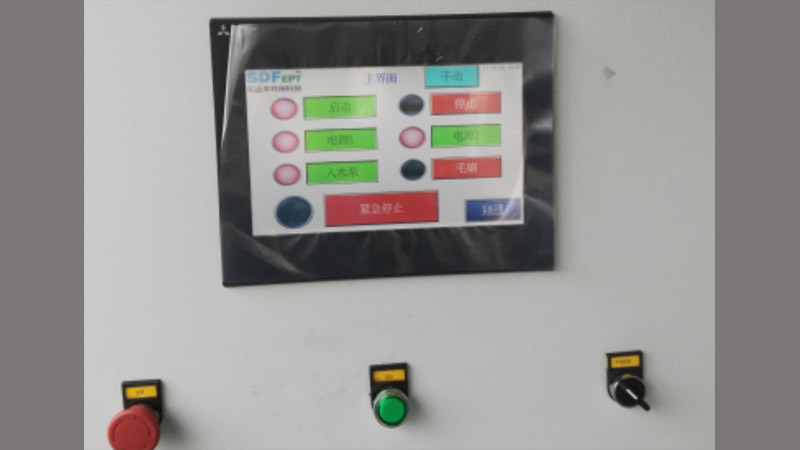
• Visual inspection of the flocs.
• Start the rake unit to harvest the floated material.
• Discharge the EWS effluent to the PAC sediment tank.
• Add PAC at 250mg/L rate into the 1000 L effluent sediment tank and wait for 15 minutes
• Run the upper clean water through the sand filter for final polish.
• Retain the sand filtered clean water effluent in the buffer tank for post process use.
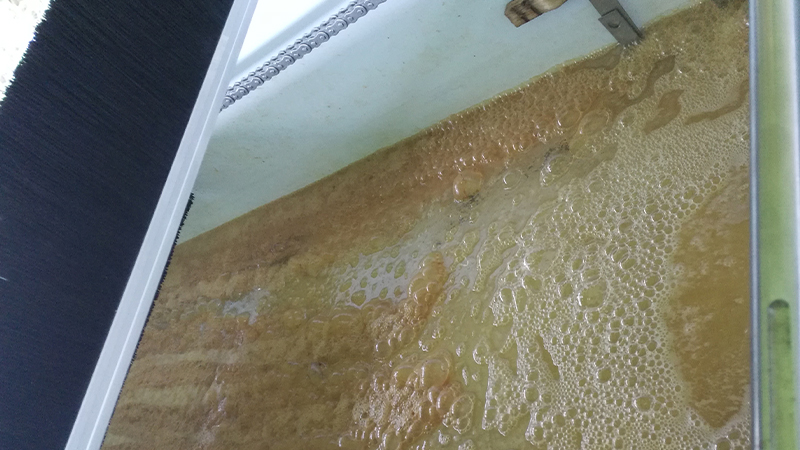
E30 EWS flotation raises oil, minerals and other sludge
particulates to the surface for removal
A Thorough and Effective Sequential Process
Stages of Electro Water Separation
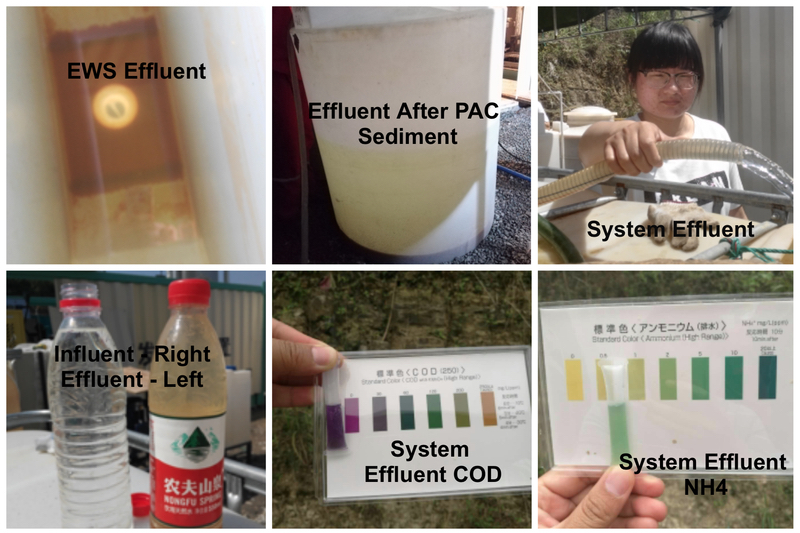
Discussion
Test Results EWS System Output:

Pilot Summation
The machine used in this initial pilot demonstration is an upgraded version of a previous design algae harvesting model, normally used for a very specific organic load, mostly TSS at maximum levels of 3,000 mg/l. The residence time in this pilot EWS module (E30) can be adjusted from 15~60 minutes maximum by acting on the inlet flow regulator valve. The purpose of adding residence time is to give sufficient reaction time for moderately contaminated effluents, where not only TSS but also some dissolved or miscible COD/BOD must be abated.
Despite these limitations, the EWS™ module has clearly demonstrated its ability to abate the major contamination factors that can be found in produce water, as shown in the table above.
Cost factors
Due to the high variability in composition, treatment methods as well as local discharge requirements, the produce water treatment OpEx ranges between US$0.3 and US$0.5 per tonne (3kWh power consumption plus 250 g PAC).
Conclusion
EWS™ shows promise in remediating not only produced water, but any industrial wastewater with a high contaminant load. The Breakthrough water cleanup technology combination of reactor tubes with high shear and contact zones, Electro-induced flotation demonstrated its efficiency not only as a stand-alone system, but also for reducing the load on polishing systems such as membranes or Reverse Osmosis units. Separate tests have pointed to a significant reduction in membrane fouling. Construction engineering is currently exploring options for retrofitting existing flotation units, as well as responsive residence time and energy input combinations to enable EWS to adapt to contamination load variations over long periods of time. Additional studies will also address the optimization paths for enabling synergistic interactions between EWS and complementary modules like AOx, to efficiently address the removal of remaining COD, NH4 or other specific contaminants, that may only be partially removed by EWS.
OriginClear’s Water Tech Network™
OriginClear licenses its proprietary technologies to forward-looking and innovative technology companies and offers a limited number of exclusive partnerships to proven water industry professionals that are driving the advancement of solutions and water treatment systems to fill the urgent need of the people of our planet for clean and reliable water. Find out if your company or operation qualifies to join our Water Tech Network. Become part of the team that operates Above and Beyond Clear Water™. Complete the form at bottom of page HERE.

